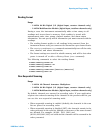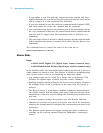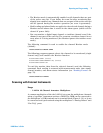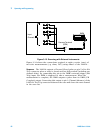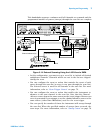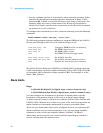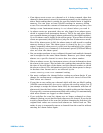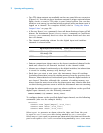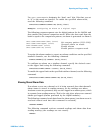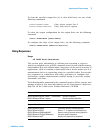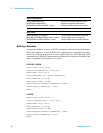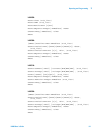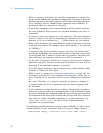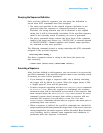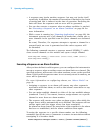Operating and Programming 3
L4400 User’s Guide 87
Use CALC:COMP:MASK to designate the “don’t care” bits. Bits that you set
to “0” in the mask are ignored. To enable the specified alarm mode,
send the following command.
CALCulate:COMPare:STATe ON,(@<ch_list>)
Example: Configuring an Alarm on a Digital Input
The following program segment sets the digital pattern for the L4450A and
then enables the pattern comparison mode. When the data read from the
bank is equal to the comparison pattern, an alarm is generated on Alarm 2.
To assign the alarm number to report any alarm conditions on the specified
totalizer channels, use the following command.
OUTPut:ALARm[1|2]:SOURce (@<ch_list>)
To configure an alarm on a totalizer channel, specify the desired count
as the upper limit using the following command.
CALCulate:LIMit:UPPer <count>,(@<ch_list>)
To enable the upper limit on the specified totalizer channel, use the following
command.
CALCulate:LIMit:UPPer:STATe ON,(@<ch_list>)
Viewing Stored Alarm Data
If an alarm occurs on a channel as it is being scanned, then that channel’s
alarm status is stored in reading memory as the readings are taken.
As alarm events are generated, they are also logged in an alarm queue, which
is separate from reading memory. This is the only place where non- scanned
alarms get logged (alarms generated by the digital modules).
The following command reads data from the alarm queue (one alarm event is
read and cleared each time this command is executed).
SYSTem:ALARm?
The following command retrieves scanned readings and alarm data from
reading memory (the readings are not erased).
FETCh?
CALC:COMP:DATA:WORD #HF6,(@1201)
CALC:COMP:TYPE EQUAL,(@1201)
OUTP:ALARM2:SOUR (@1201)
CALC:COMP:STAT ON,(@1201)
Set compare pattern (1111 0110)
Generate alarm on match
Enable alarms
Enable pattern compare mode



